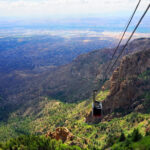Are you curious about the mountainous landscapes of Mexico? Mexico is not just about beaches and vibrant cities; it’s also home to a vast network of mountains, perfect for LGBTQ+ adventurers seeking both natural beauty and cultural experiences. Discover Mexico’s stunning mountain ranges and plan your visit with insights from gaymexico.net, your trusted resource for LGBTQ+ travel in Mexico.
1. Unveiling Mexico’s Mountainous Terrain
Mexico boasts an impressive number of mountains, with approximately 47,539 named mountains gracing its diverse landscape. These mountains contribute significantly to Mexico’s geography, geology, and ecology, creating breathtaking scenery and unique ecosystems.
Exploring the Key Mountain Ranges
Mexico’s mountainous terrain is primarily defined by several major ranges, each with distinct characteristics:
- Cordillera Neovolcanica: Home to Mexico’s highest peaks, including Pico de Orizaba, this range is of volcanic origin.
- Sierra Madre Occidental: A rugged chain of summits and deep canyons, known as “barrancas,” running down the western coast.
- Sierra Madre Oriental: Located along the eastern coast, mainly composed of Cretaceous-age sedimentary rocks.
- Sierra Madre del Sur: Stretching along the Pacific Coast, characterized by sedimentary rock and significant erosion.
- Chiapas Ranges (Sierra Madre de Chiapas): Found in the state of Chiapas, part of the Central America Volcanic Arc, featuring numerous volcanic formations.
- Mexican Plateau: Situated between the Sierra Madre Occidental and Oriental, dating back to the Mesozoic Era and primarily sedimentary.
- Mexican West Coast Ranges: Hosting major volcanoes from Nayarit to Michoacán, potentially considered part of the Cordillera Neovolcánica.
- Yucatán Mountains: A few elevated points in the Yucatán Peninsula, largely composed of limestone.
- California Ranges & Baja California Mountains: Located in Baja California, these mountains are part of the Peninsular Ranges with complex geological origins.
2. Delving into Mexico’s Regional Geography
Mexico’s extensive terrain is best understood by breaking it down into distinct regions, each offering unique geographical features:
-
Baja California: Known for its beaches, deserts, and the California Ranges, attracting many tourists.
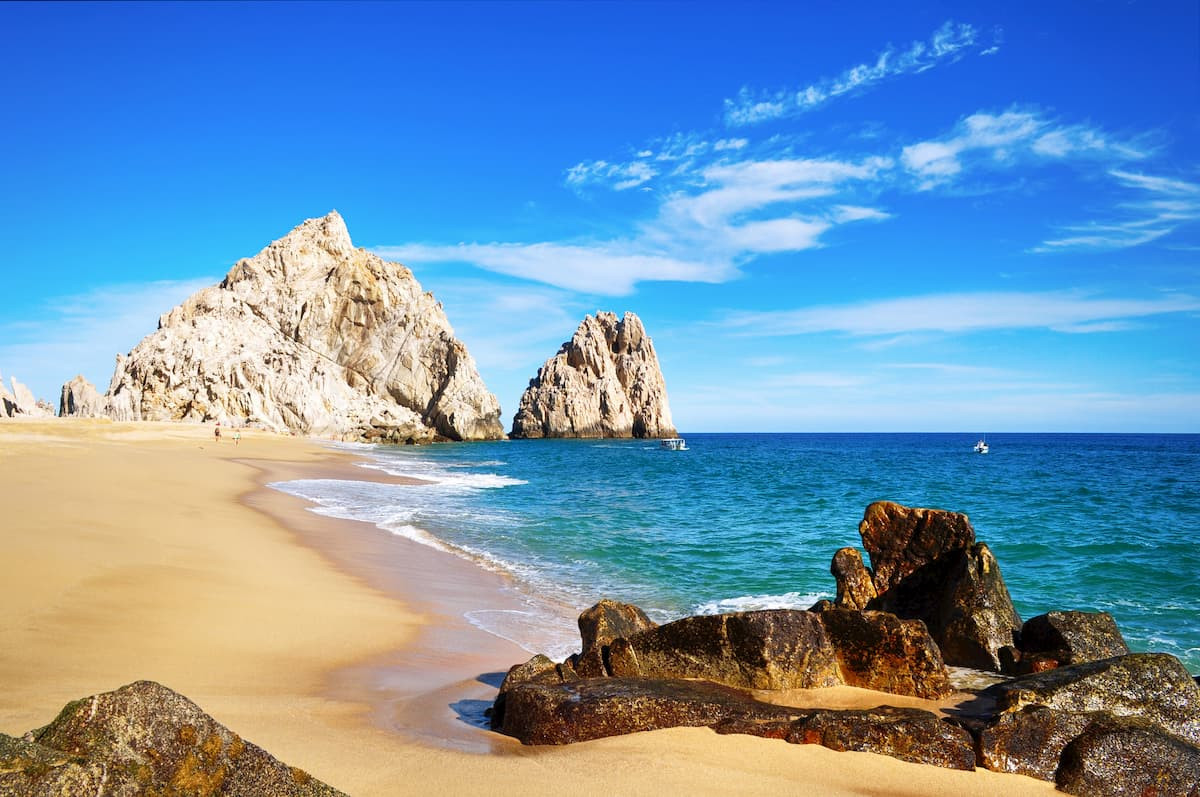 Baja California Sur Sunset Scenery
Baja California Sur Sunset Scenery -
Northern Mexico: Home to hot, arid deserts and parts of the Sierra Madre Occidental and Oriental.
 Vast Sonora Desert Landscape in Northern Mexico
Vast Sonora Desert Landscape in Northern Mexico -
Bajío: A central region known for its quality of life, tourism, and sections of the Sierra Madre ranges.
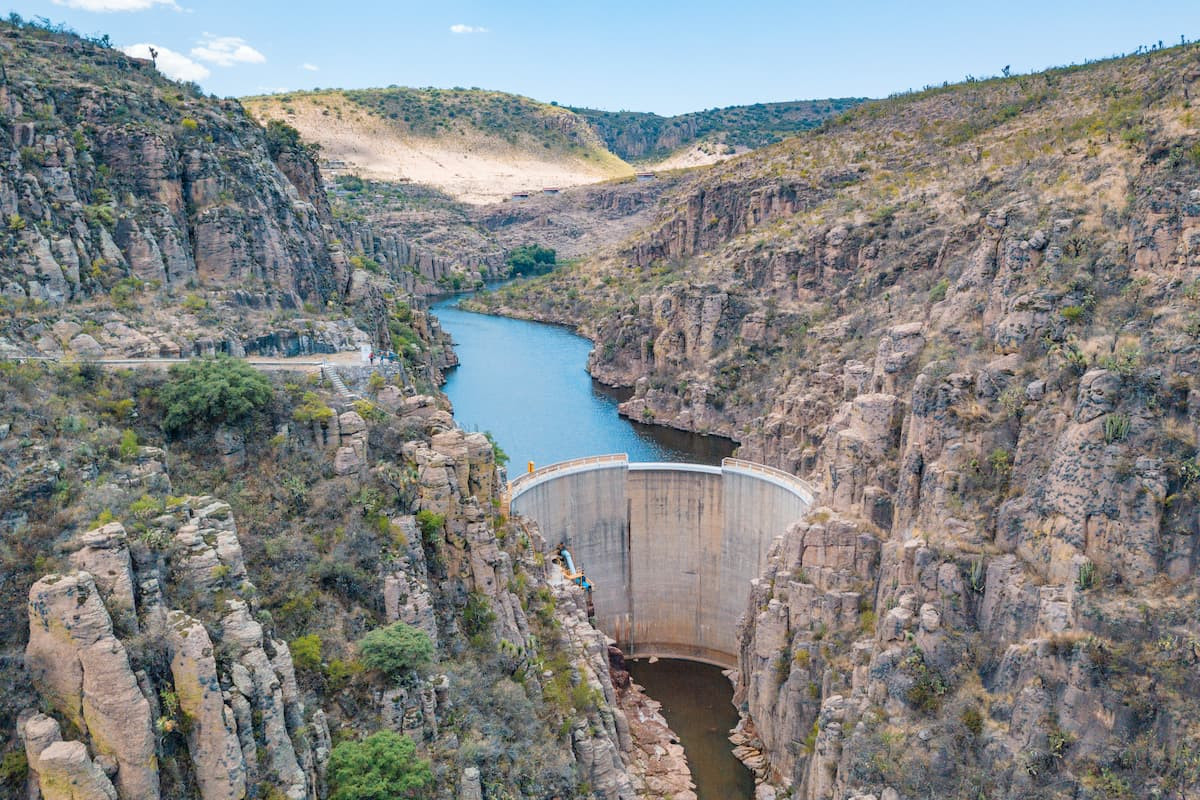 Boca de Tunel Canyon in Aguascalientes, Mexico
Boca de Tunel Canyon in Aguascalientes, Mexico -
Pacific Coast: Dominated by beaches, volcanoes, and forests, including parts of major mountain ranges.
 Agave Fields in Jalisco, Mexico
Agave Fields in Jalisco, Mexico -
Central Mexico: Densely populated and mountainous, featuring the Cordillera Neovolcanica and parts of the Sierra Madre Oriental.
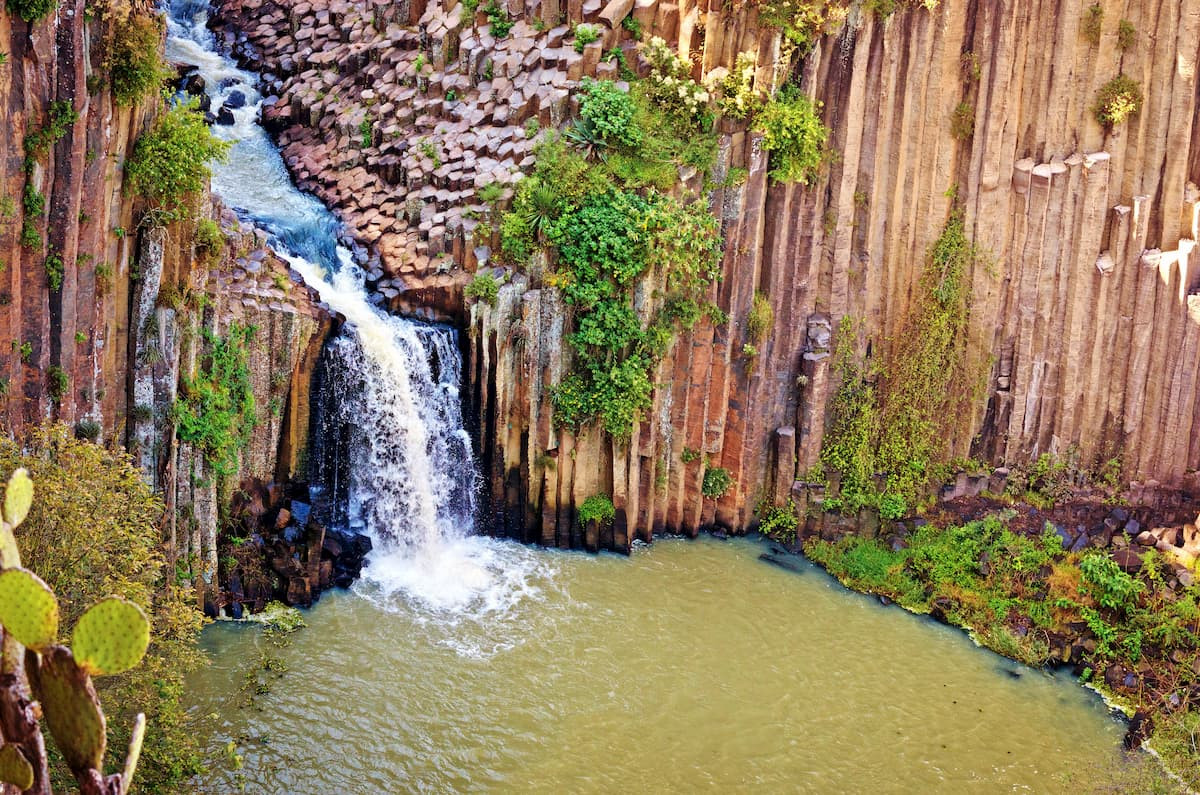 Basaltic Prisms of Santa Maria Regla, Hidalgo
Basaltic Prisms of Santa Maria Regla, Hidalgo -
Veracruz: Characterized by beaches, natural resources, and the highest peak, Pico de Orizaba.
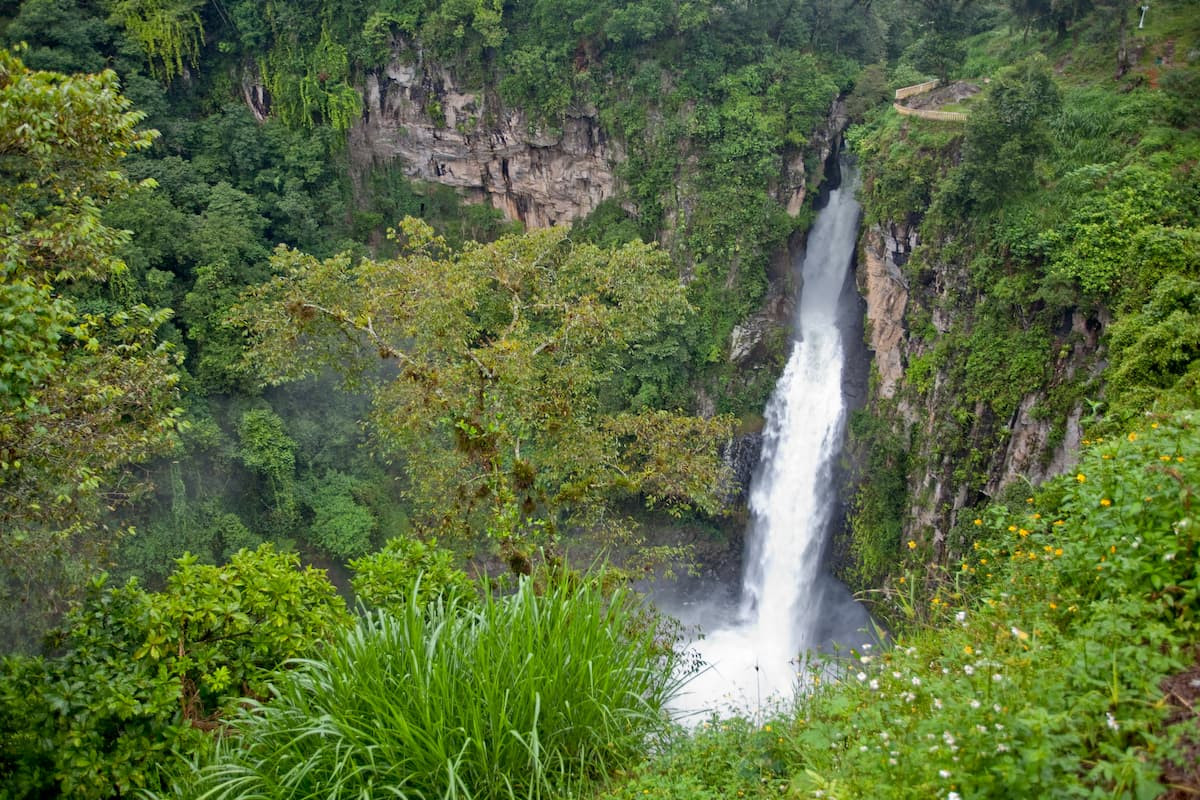 Picturesque Xico Waterfalls near Veracruz, Mexico
Picturesque Xico Waterfalls near Veracruz, Mexico -
Oaxaca: Known for its cultural history, Indigenous population, stunning beaches, and the Sierra Madre del Sur.
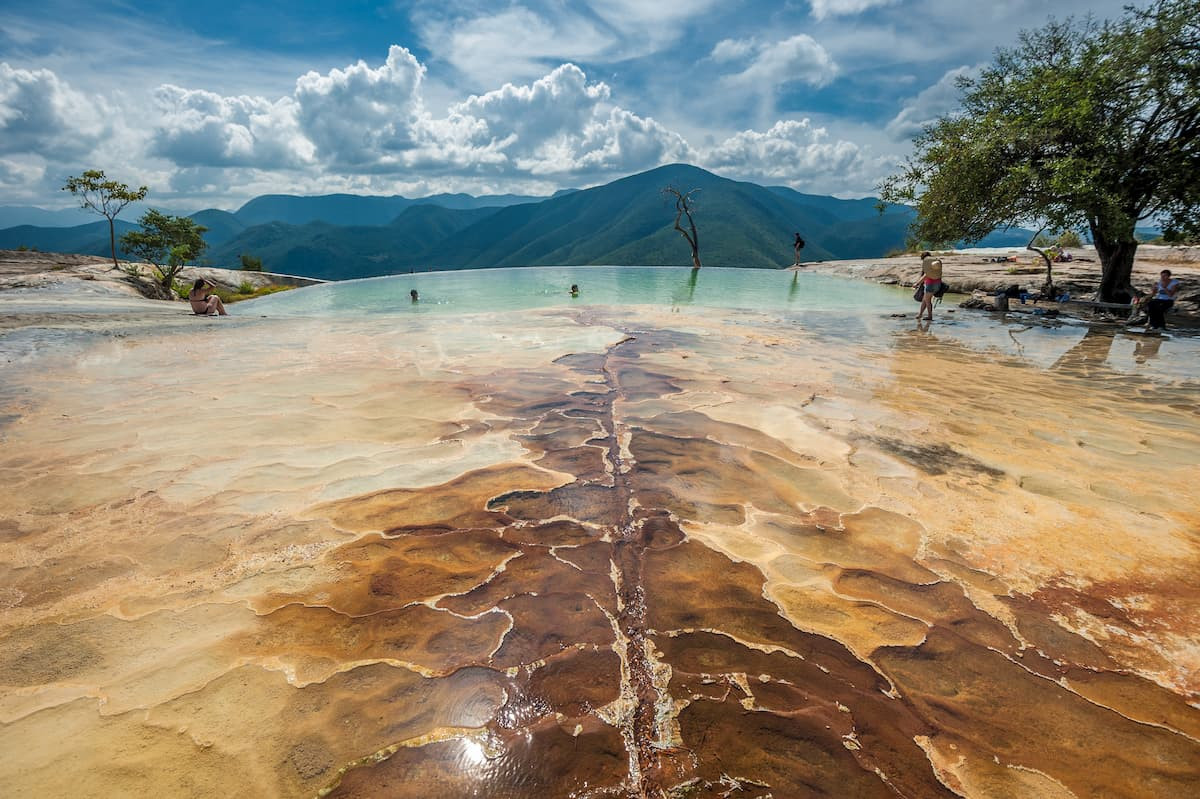 Hierve el Agua, Oaxaca, Mexico
Hierve el Agua, Oaxaca, Mexico -
Chiapas & Tabasco: Home to the Chiapas Ranges and dense rainforests, bordering Guatemala.
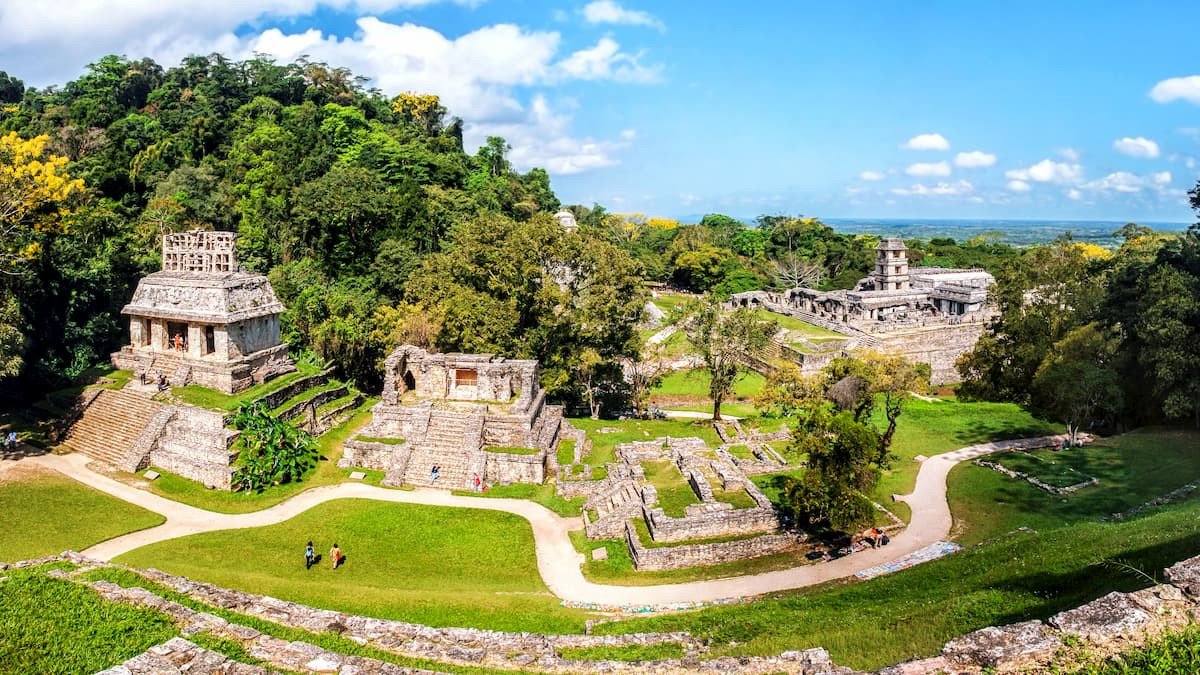 Ancient Maya City in Chiapas, Mexico
Ancient Maya City in Chiapas, Mexico -
Yucatán Peninsula: Features beaches, Mayan sites, and low-lying terrain with the Yucatán Mountains.
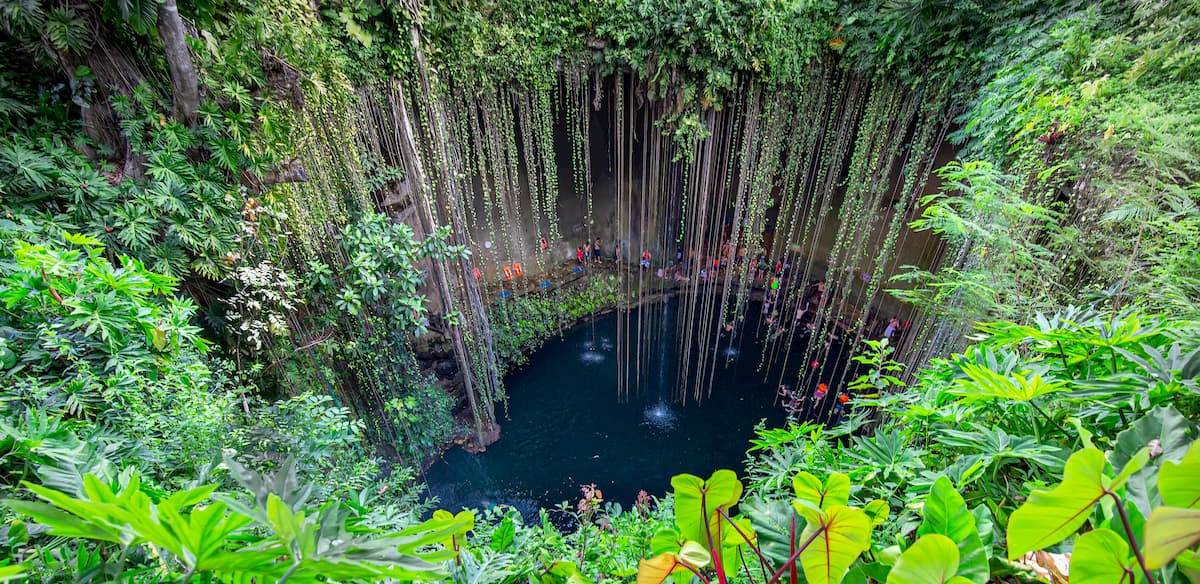 Ik Kil Cenote, Yucatan Peninsula, Mexico
Ik Kil Cenote, Yucatan Peninsula, Mexico
3. Understanding Mexico’s Geological Foundation
Mexico’s landscape is a result of millions of years of geological processes, including subduction, volcanic activity, and erosion. These processes have shaped the country’s mountain ranges and created a diverse geological mosaic.
Exploring the Formation of Mountain Ranges
- Cordillera Neovolcanica: Formed by subduction, this range is a volcanic area containing active and dormant volcanoes.
- Sierra Madre Occidental: Remnants of a massive plateau composed of extrusive igneous rock, featuring gold and silver deposits.
- Sierra Madre Oriental: Primarily composed of Cretaceous-age sedimentary rocks, formed through faulting and uplifting.
- Sierra Madre del Sur: Mainly made up of Cretaceous-age sedimentary rock, heavily eroded by the Río Balsas.
- Chiapas Ranges: Part of the Central America Volcanic Arc, home to numerous volcanic formations.
- Mexican Plateau: Dating back to the Mesozoic Era, mostly sedimentary in origin with lava outpourings and uplift.
- Mexican West Coast Ranges: Highly volcanic, featuring stratovolcanoes like Volcán de Tequila and Volcán Ceboruco.
- Yucatán Mountains: Predominantly sedimentary, with limestone and dolomites, known for the Chicxulub crater.
- California Ranges & Baja California Mountains: Formed during the Mesozoic when the Pacific plate subducted under the North American plate, resulting in a granitic batholith.
4. Experiencing Mexico’s Diverse Ecology
Mexico’s varied terrain supports a wide range of ecosystems, from deserts to rainforests. The World Wildlife Fund has identified numerous terrestrial ecoregions and biomes, each with unique flora and fauna.
Highlighting Key Biomes
- Deserts & Shrublands: Found in Northern Mexico and Baja California, known for xeric shrubs, succulents, and wildlife such as pronghorn and jaguars.
 Jaguar in Mexican Habitat
Jaguar in Mexican Habitat - Mangroves: Located along the coasts, featuring red, white, and black mangroves, and wildlife like lynx and seabirds.
 Mangrove Tunnel in Celestun, Mexico
Mangrove Tunnel in Celestun, Mexico - Coniferous Forests: Found in higher elevations, including pine-oak forests with species like sugar pine and wildlife like mule deer and mountain lions.
 Pine Forest in Chihuahua, Mexico
Pine Forest in Chihuahua, Mexico - Dry Broadleaf Forests: At lower elevations, featuring species like jabín and wildlife like white-tailed deer and jaguars.
- Moist Broadleaf Forests: Mostly in southern Mexico, boasting tropical conditions and diverse species like American sweetgum and Morelet’s crocodiles.
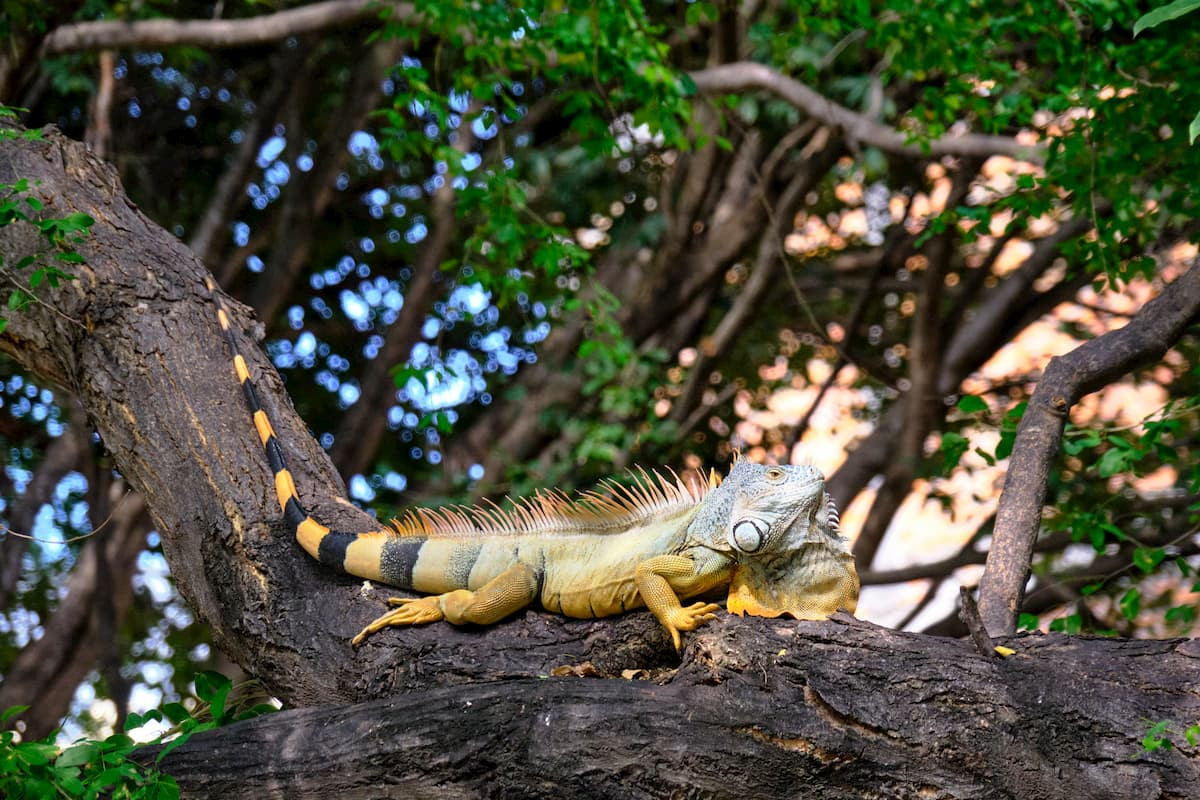 Green Iguana in Puerto Vallarta, Mexico
Green Iguana in Puerto Vallarta, Mexico
5. Discovering Mexico’s Rich History
Mexico’s history spans thousands of years, from ancient civilizations like the Olmecs and Mayans to Spanish colonization and the Mexican Revolution. This rich cultural heritage is reflected in the country’s architecture, traditions, and people.
Exploring Key Historical Periods
-
Pre-Columbian Era: Home to advanced civilizations like the Aztecs and Mayans.
 Maya Pyramid in Chichen-Itza, Mexico
Maya Pyramid in Chichen-Itza, Mexico -
Spanish Colonial Period: Mexico was under Spanish rule from the 16th to the 19th century.
-
Mexican War of Independence: Fought from 1810 to 1821, leading to the establishment of the United Mexican States.
-
Mexican Revolution: A period of social and political upheaval from 1910 to 1920.
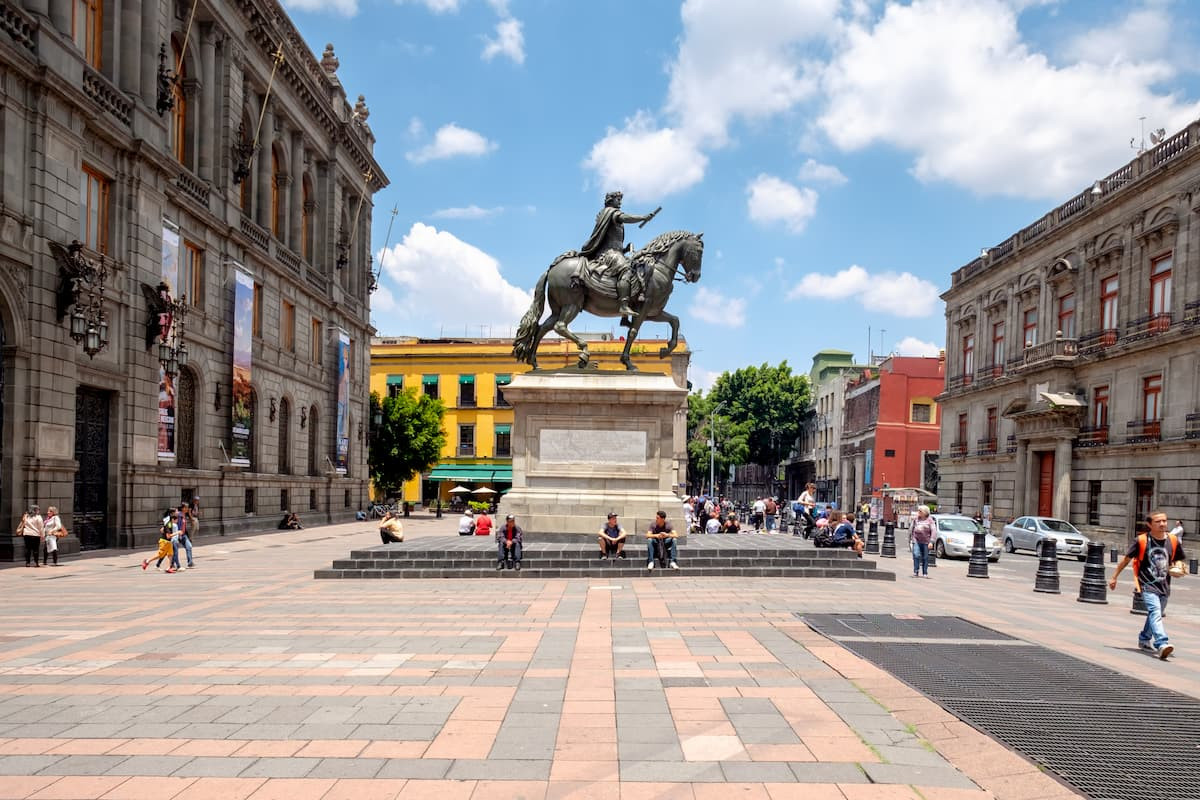 Historical Center of Mexico City
Historical Center of Mexico City
6. Embarking on Hiking Adventures in Mexico
Mexico offers a plethora of hiking destinations, from towering volcanoes to deep canyons. Here are some of the top hiking areas to explore:
Exploring Premier Hiking Locations
- Pico de Orizaba National Park: Home to Mexico’s highest peak, popular for climbing between October and March.
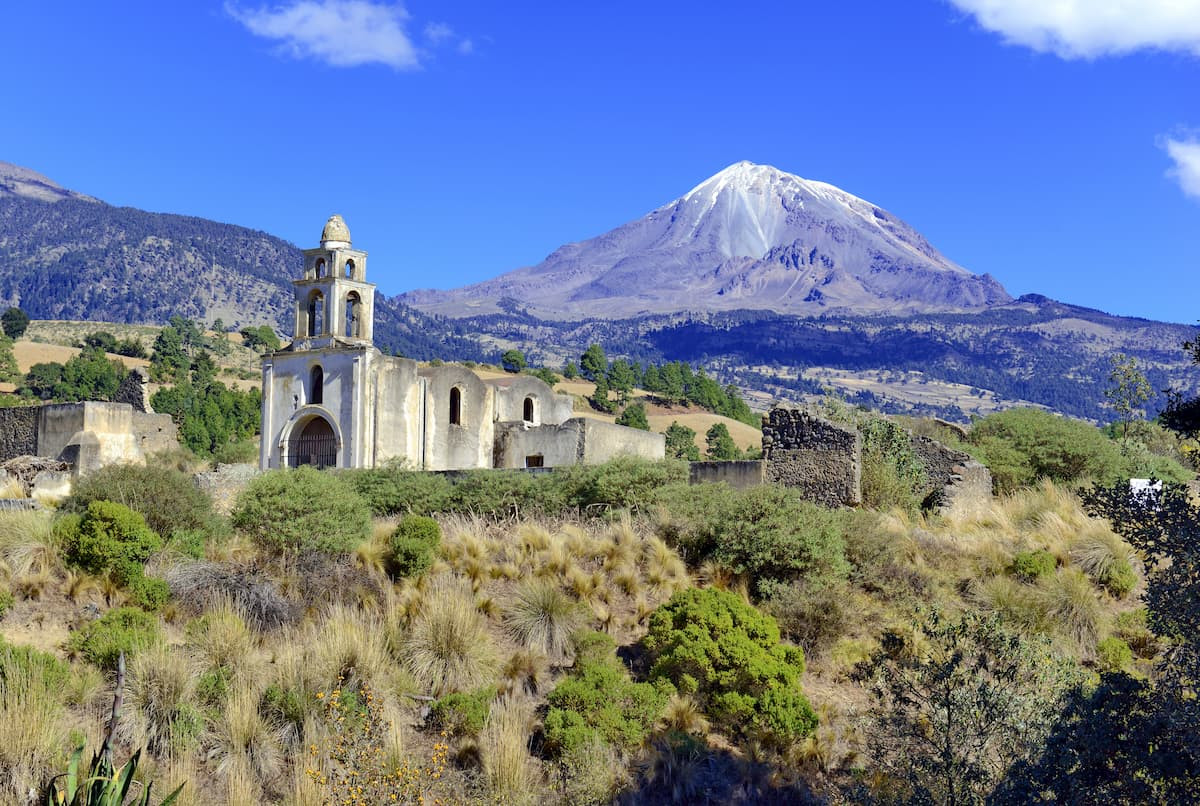 Pico de Orizaba National Park Landscape
Pico de Orizaba National Park Landscape - Izta-Popo Zoquiapan National Park: Features the second and third highest peaks in Mexico, offering various hiking trails.
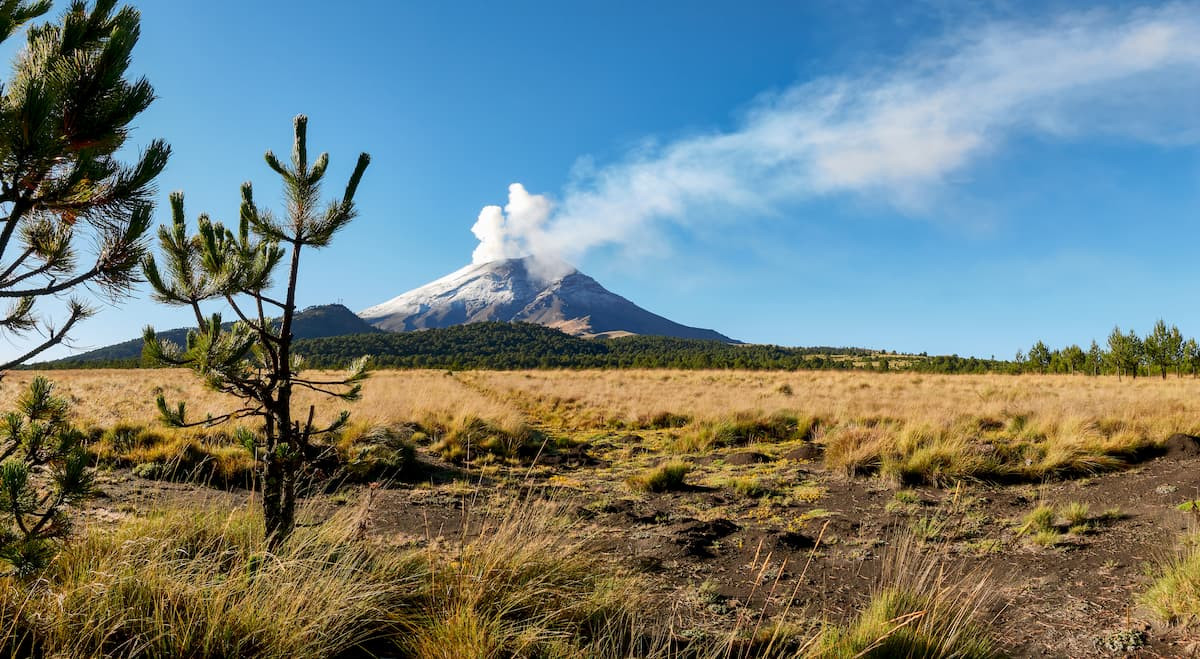 Izta-Popo Zoquiapan National Park Scenery
Izta-Popo Zoquiapan National Park Scenery - Sumidero Canyon National Park: Known for its massive cliffs along the Grijalva River, offering boat tours and cave explorations.
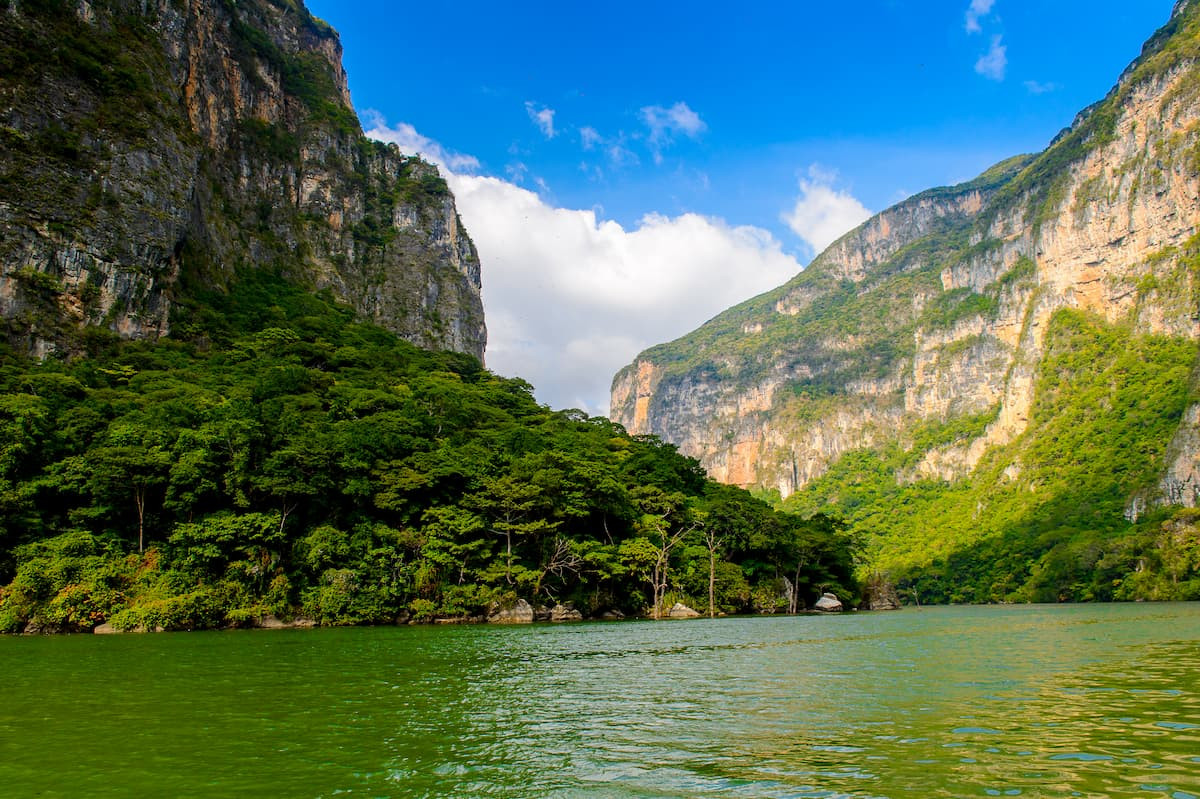 Sumidero Canyon National Park Grijalva River
Sumidero Canyon National Park Grijalva River - Basaseachic Falls National Park: Home to the second-highest waterfall in Mexico, located in the Sierra Madre Occidental.
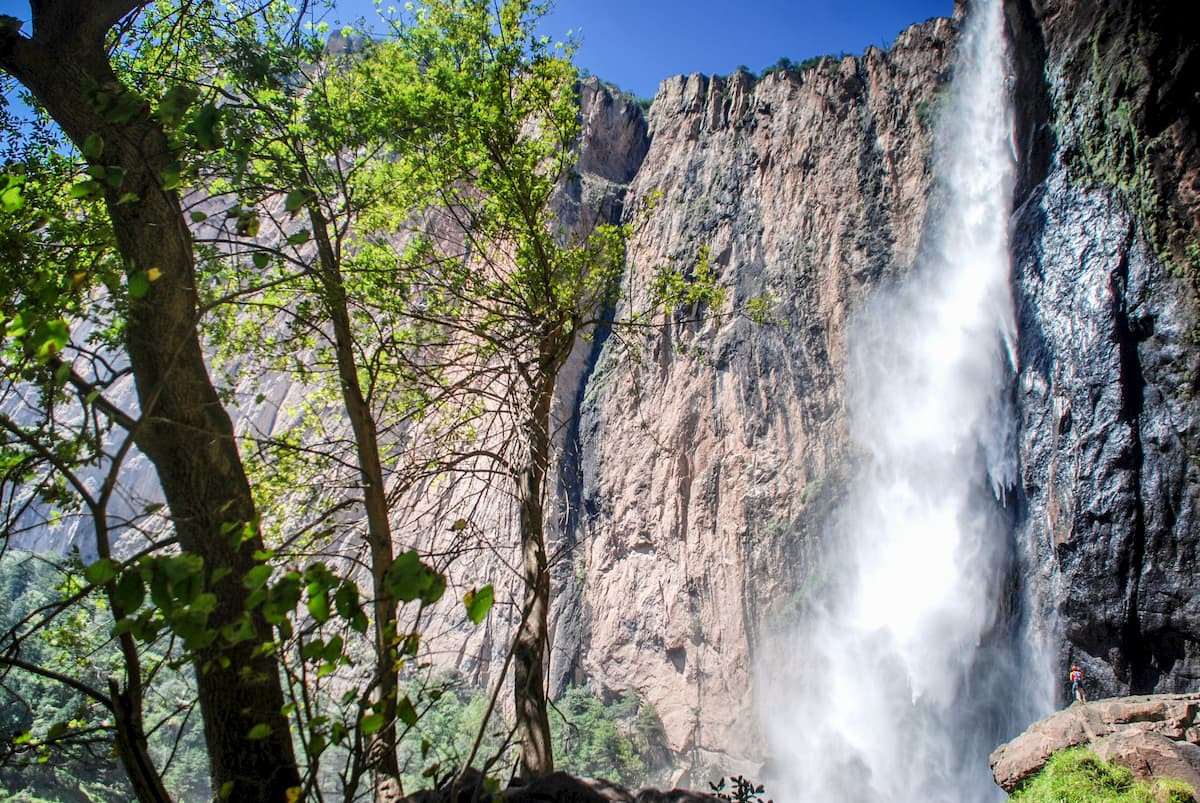 Basaseachic Falls National Park Waterfall
Basaseachic Falls National Park Waterfall
7. Navigating Mexico’s Major Cities
Mexico’s major cities offer a blend of culture, history, and modernity. Each city has its unique charm and attractions, catering to diverse interests.
Discovering Vibrant Urban Centers
- Mexico City: The largest city in North America, a major cultural and financial hub.
 Aerial view of Mexico City
Aerial view of Mexico City - Guadalajara: Known for its business, arts, and cultural importance, with significant educational and technological presence.
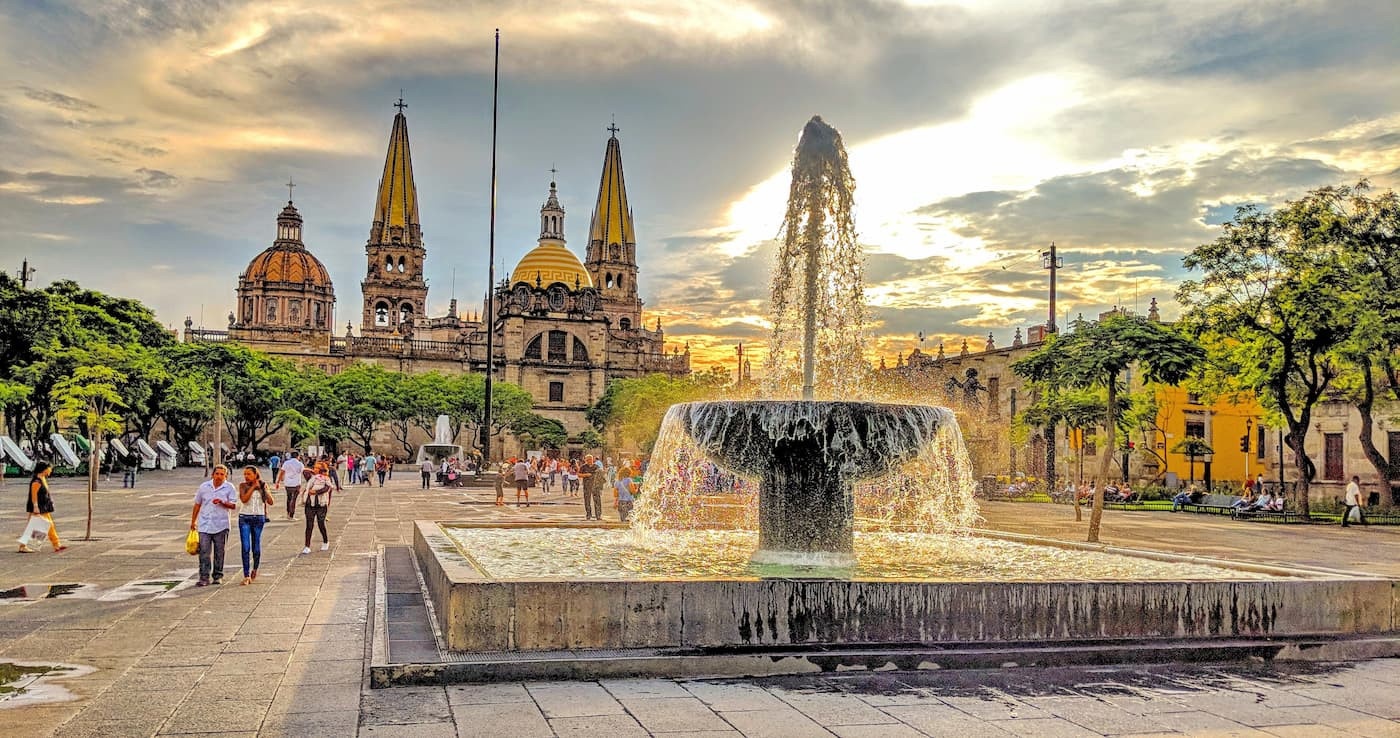 Panoramic view of Guadalajara, Mexico
Panoramic view of Guadalajara, Mexico - Monterrey: Situated at the foothills of the Sierra Madre Oriental, a major economic center with numerous Mexican companies.
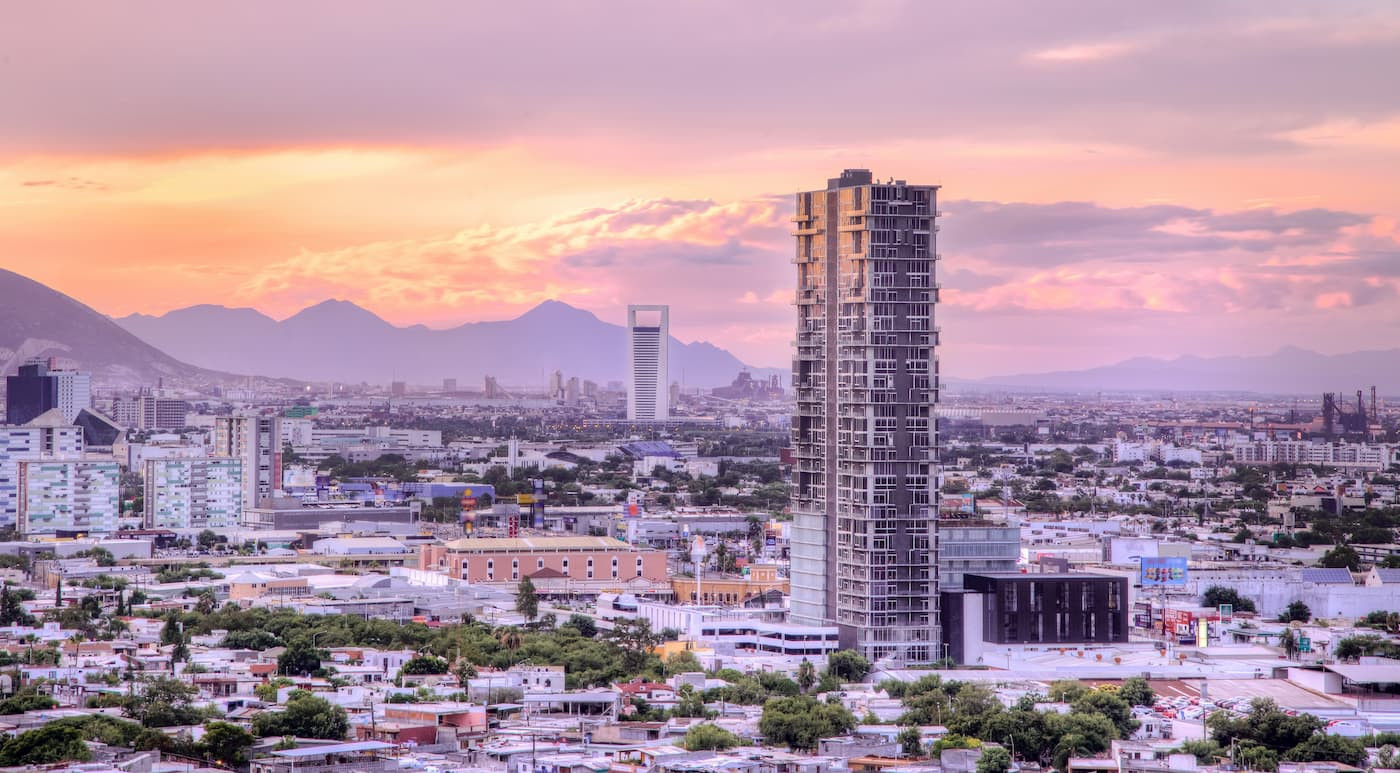 Urban skyline of Monterrey, Mexico
Urban skyline of Monterrey, Mexico - Puebla: Known for its prestigious universities and automobile industry, a UNESCO World Heritage Site with rich history.
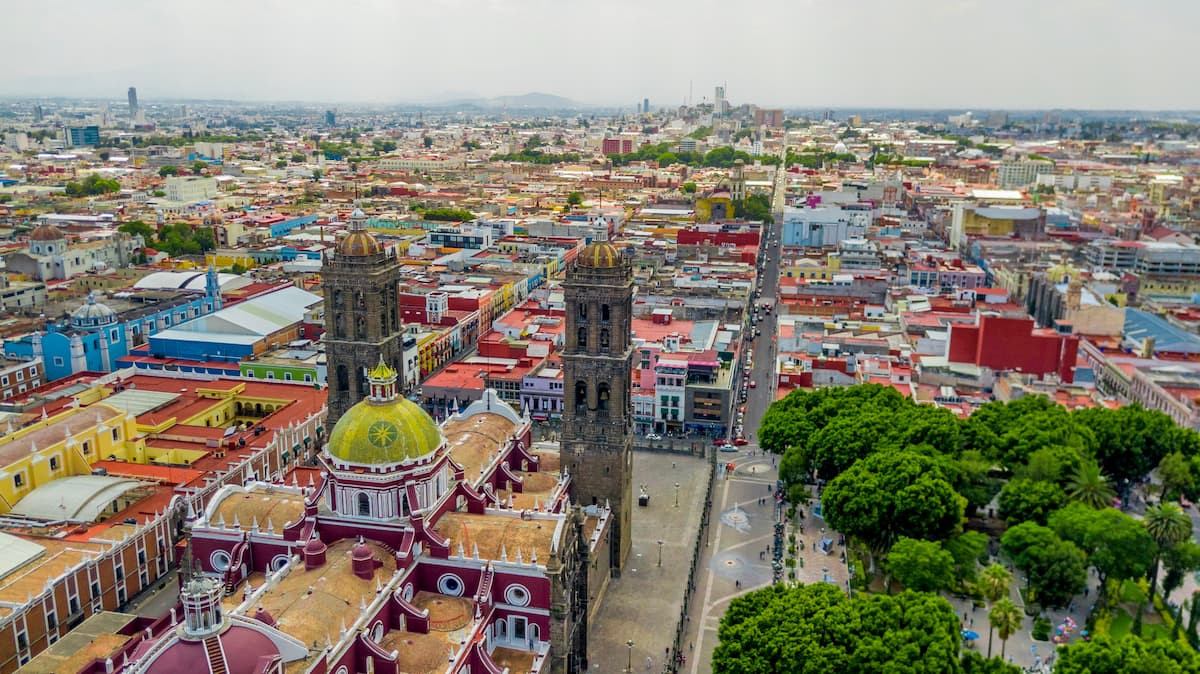 Historic cityscape of Puebla, Mexico
Historic cityscape of Puebla, Mexico
8. Mexico’s Mountain Ranges: A Detailed Overview
Here’s a deeper dive into Mexico’s major mountain ranges, offering key insights into their geography and geological history:
| Mountain Range | Location | Notable Features |
|---|---|---|
| Cordillera Neovolcanica | Central Mexico | Highest peaks, volcanic origin, active and dormant volcanoes |
| Sierra Madre Occidental | Western Coast | Rugged summits, deep canyons, extrusive igneous rock |
| Sierra Madre Oriental | Eastern Coast | Cretaceous-age sedimentary rocks, faulting and uplifting |
| Sierra Madre del Sur | Pacific Coast | Sedimentary rock, erosion by Río Balsas |
| Chiapas Ranges (Sierra Madre de Chiapas) | Chiapas | Part of Central America Volcanic Arc, volcanic formations |
| Mexican Plateau | Central Mexico | Sedimentary origin, lava outpourings, uplift |
| Mexican West Coast Ranges | Western Mexico | Volcanic, stratovolcanoes |
| Yucatán Mountains | Yucatán Peninsula | Low-lying, limestone, Chicxulub crater |
| California Ranges & Baja California Mountains | Baja California | Part of Peninsular Ranges, granitic batholith |
9. Navigating LGBTQ+ Travel in Mexico’s Mountain Regions
While exploring Mexico’s mountains, LGBTQ+ travelers can find welcoming and inclusive environments. Cities like Guadalajara and Mexico City have vibrant LGBTQ+ scenes and offer resources for safe and enjoyable travel.
Key Considerations for LGBTQ+ Travelers
- Research LGBTQ+-friendly destinations: Identify cities and regions with established LGBTQ+ communities and resources.
- Stay informed about local laws and customs: Understand the legal landscape and cultural norms regarding LGBTQ+ rights in different areas.
- Utilize LGBTQ+ travel resources: Consult websites and organizations like gaymexico.net for up-to-date information and recommendations.
- Connect with local LGBTQ+ communities: Engage with local LGBTQ+ groups and individuals for insider tips and a sense of community.
- Prioritize safety and respect: Be aware of your surroundings and act respectfully towards local customs and traditions.
10. FAQs: Your Questions About Mexico’s Mountains Answered
Here are some frequently asked questions to help you plan your mountain adventure in Mexico:
-
How Many Mountains Are In Mexico?
Mexico has approximately 47,539 named mountains. -
What is the highest mountain in Mexico?
The highest mountain in Mexico is Pico de Orizaba, standing at 5,636 meters (18,491 feet). -
Which mountain ranges are located in Mexico?
Major mountain ranges include the Cordillera Neovolcanica, Sierra Madre Occidental, Sierra Madre Oriental, and Sierra Madre del Sur. -
Are there any active volcanoes in Mexico?
Yes, Mexico has active volcanoes, particularly in the Cordillera Neovolcanica, such as Popocatépetl. -
What is the best time to hike in Mexico’s mountains?
The best time to hike is typically during the dry season, from October to April. -
Are there any national parks in Mexico’s mountain regions?
Yes, notable national parks include Pico de Orizaba National Park, Izta-Popo Zoquiapan National Park, and Basaseachic Falls National Park. -
What kind of wildlife can I see in Mexico’s mountains?
Wildlife varies by region but includes jaguars, mountain lions, mule deer, and various bird species. -
What are some popular hiking trails in Mexico’s mountains?
Popular trails include routes up Pico de Orizaba and Iztaccíhuatl, as well as trails in Sumidero Canyon. -
Are there any LGBTQ+-friendly destinations near Mexico’s mountains?
Cities like Guadalajara and Mexico City have vibrant LGBTQ+ scenes and are relatively close to mountain regions. -
How can I stay safe while hiking in Mexico’s mountains?
Stay informed about weather conditions, hike with a guide if possible, and carry necessary supplies such as water and navigation tools.
Mexico’s mountains offer a unique and awe-inspiring landscape for LGBTQ+ travelers seeking adventure and natural beauty. From the towering peaks of the Cordillera Neovolcanica to the deep canyons of the Sierra Madre Occidental, there’s something for every outdoor enthusiast.
Ready to explore Mexico’s mountainous terrain? Visit gaymexico.net for comprehensive travel guides, LGBTQ+ resources, and community connections. Plan your adventure today and discover the beauty and diversity of Mexico!
Address: 3255 Wilshire Blvd, Los Angeles, CA 90010, United States
Phone: +1 (213) 380-2177
Website: gaymexico.net
